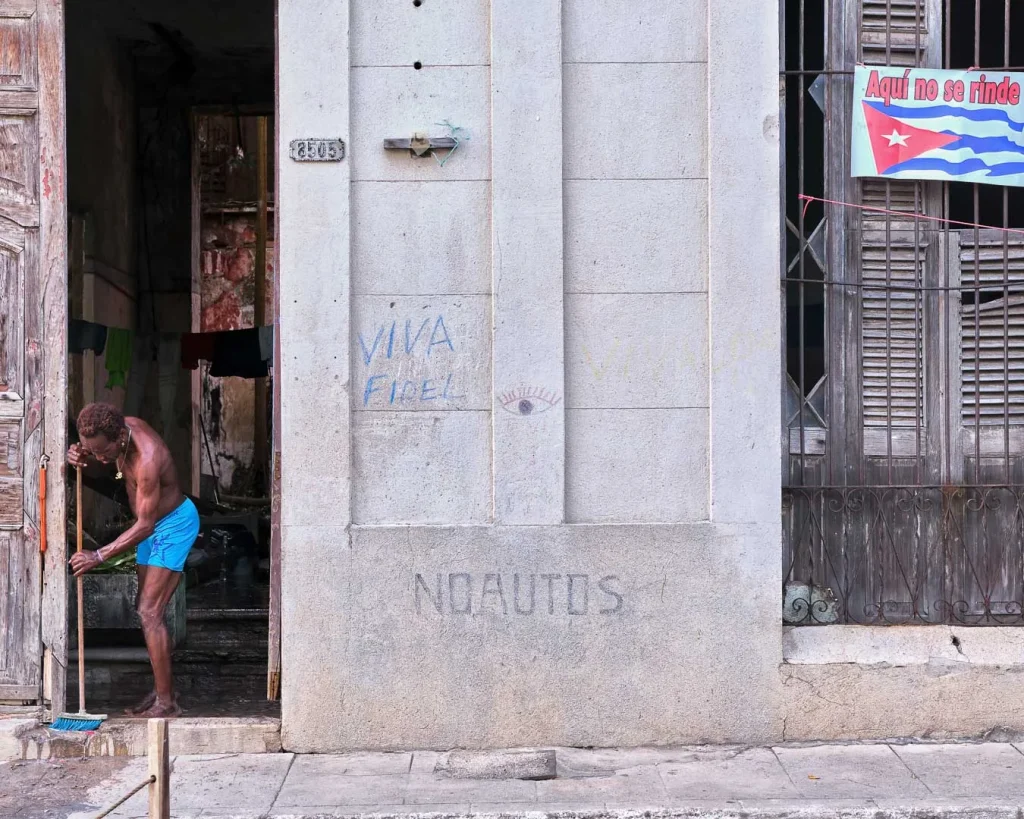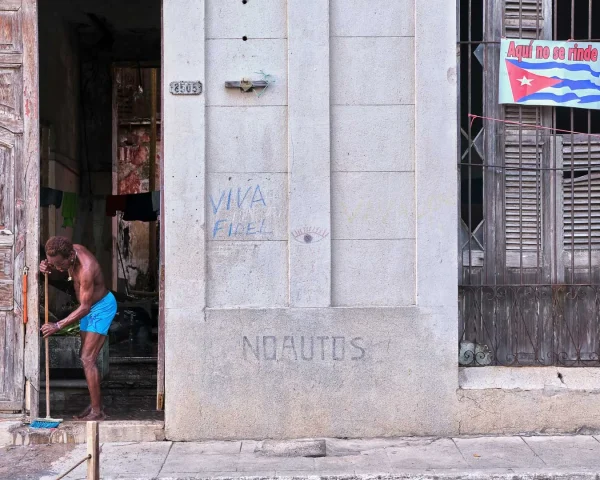
Photos and Text by Nester Nuñez (Joven Cuba)
HAVANA TIMES – “Mother, here is your son, Enrique Eugenio Zayas Batista, offering you this money so that you can double it in the name of my godmother Raiza —Maferefún every day, Raiza— and the dead woman who accompanies her, who is my guardian angel, the one who protects and guides me and the one who keeps me in the place where I am.”
Enrique Eugenio Zayas Batista pierces the tough skin of the pumpkin with the tip of a knife, careful not to hurt himself. He repeats the action seven times, with certainty, without haste or anger, and I wait for a yellow liquid mixed with seeds to sprout, as if the pumpkin were going to deliver to Enrique, as a sign of promise, of mutual pact, its blood and heart. But immediately I realize that guarantees are not demanded from the higher entity. Enrique has faith, he needs Her, and the clean and deep cuts he makes and that he opens more and more with the handle of a spoon are not wounds, but smiles:
“If you give me what I ask of you, I assure you that I will give you a touch that you will feel throughout the city.”
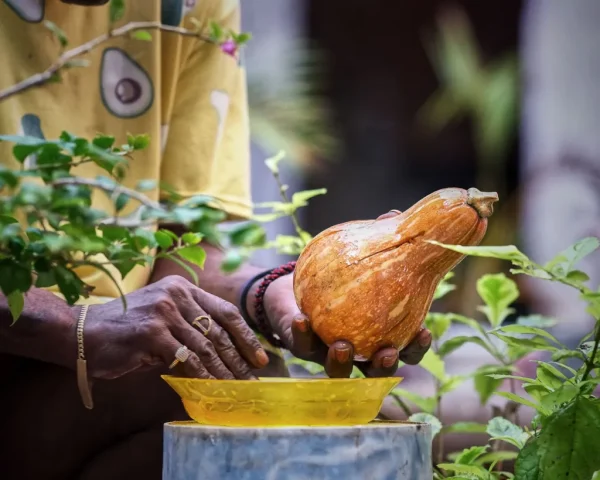
At his feet, on a plate, there is a little bottle of honey and some yellow coins, worth one peso each, that is, with no real value, because with them you cannot pay for anything. They only serve for Enrique’s ritual. When he bends down to pick them up, he pushes his dress and holds it between his thighs to avoid indiscreet looks. It’s an automatic gesture, very feminine. The dress is a yellow that was once intense, with drawings of avocados cut in half, so they show the peel, the pulp, and the seed. There is one, for example, on Emilio’s left breast, a breast that once occupied a size 32 bra, but now is a nipple with not much juice because many years ago he stopped taking hormones:
“I need you to keep this money for me so that nobody knows I have it hidden there. Like you used to do, hiding your money in pumpkins… So that neither Elegguá, nor Shangó, nor Oggún know where I have my money.”
There are 21 yellow coins that he pushes to the bottom for the seven smiles he made to the pumpkin. I wish it were a music box, that a melody came out each time, a cheerful song would shake the aged stone foundations of this house of everyone, or a tearful bolero that makes us think about the fate of the thousands of Enriques who have filled our streets in recent years.
Instead, he sees it more like a kind of slot machine, as if in a casino suddenly the bell rang and the coin he put in released hundreds of others, and more valuable. I suppose this is the pumpkin for him: a kind of magical lamp. Or am I mistaken? Maybe I still don’t understand how his Faith works.
“And when this pumpkin dries out, you will give me what I ask of you. Sure!”

He pours some of the honey into the palm of his hand and smears the whole pumpkin. Then, also his face. The black face, with all its wrinkles, shines. His eyes were already sparkling before, perhaps from the emotion of the ritual or because, inevitably, they reflect the flames of the cardboard and papers that he burns every day in a corner to soften the pair of sweet potatoes or plantains that serve as his food. When he finishes with the honey, he heads towards the room where he sleeps:
“And now I’m going to put you up in the highest place in my room,” he says.
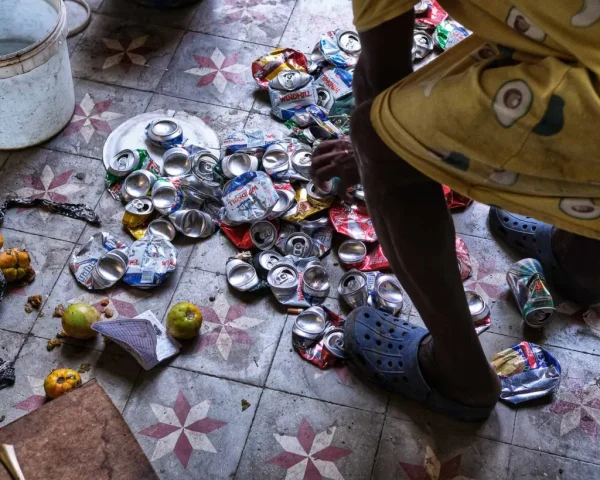
He carries the pumpkin as if it were an old and fragile object. It is the smallest one he found in the corner market. He paid 60 pesos for it. For the honey, 200. In total, almost 150 empty and crushed cans. But he is not thinking that 48 of them make a kilogram, which he sells for ninety pesos: hope protects him, which floats around him and gracefully ripples the faded dress he found where he finds the cans.
I see Enrique elevate his illusions to the highest shelf, smiling pumpkin, with the same attitude with which he throws himself headfirst into a garbage can under the afternoon sun, wishing to find at the bottom the necessary strength to continue forward.
The palace
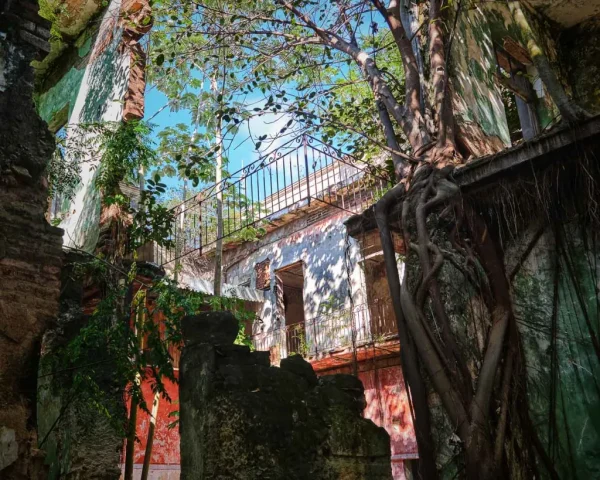
In the historic center of Matanzas, close to the City Hall (current headquarters of the provincial government), and very close also to the main shops, the Cathedral, and the most important park, the Sagrado Corazón de Jesus College of the Paules Fathers was


